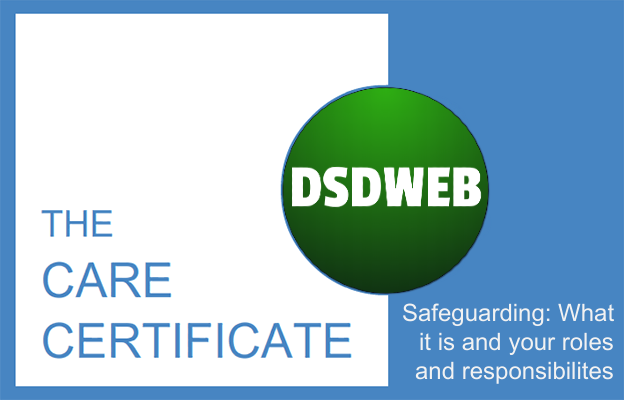This page is designed to answer the following questions:
- 10.1a Explain the term safeguarding adults (Care Certificate, Standard 10: Safeguarding adults)
- 1.1 Explain the term safeguarding (Level 2 Diploma in Care, Safeguarding and protection in care settings)
- 1.1 Explain the term safeguarding (Level 3 Diploma in Adult Care, Safeguarding and protection in care settings)
NOTE: This page has been quality assured for 2023 as per our Quality Assurance policy.
Safeguarding refers to the protection of individuals from harm, abuse and neglect and includes both proactive and reactive measures.
Safeguarding activities can include:
- Reporting concerns/suspicions of abuse
- Investigating concerns and suspicions
- Providing information and support about abuse and raising public awareness
- Empowering vulnerable individuals to make them less likely to be abused
- Having robust systems and processes in place to reduce the likelihood of abuse
- Ensuring that staff receive appropriate training for their role
Under the Care Act 2014, local authorities have the responsibility to investigate all concerns and suspicions of abuse within their region. Local authorities must also set up Safeguarding Adult Boards, which investigate serious cases of abuse and neglect.
As a care worker, you have a duty of care to safeguard and protect all vulnerable individuals that you work with. In addition, this responsibility extends to others that you may not work with directly (including children). This is discussed further in the next section relating to your own role and responsibilities in safeguarding individuals.
Accompanying Video
Video Transcript
Hi,
My name is Daniel Dutton and I run the website dsdweb.co.uk which provides free help, guidance and support for people that are studying for care qualifications.
In this video, we will be explaining what the term ‘safeguarding’ means in the context of health and social care. This is an assessment criterion for the Level 2 and Level 3 Diplomas in Adult Care as well as the Care Certificate.
But before I continue, I’d be very grateful if you could click on the thumbs-up button to Like this video and subscribe to my channel. This helps the video to be more visible on Youtube so that it can be easily found by other students.
The statutory guidance for the Care Act 2014 states that safeguarding is “Protecting an adult’s right to live in safety, free from abuse and neglect. It is about people and organisations working together to prevent and stop both the risks and experience of abuse or neglect, while at the same time making sure that the adult’s wellbeing is promoted including, where appropriate, having regard to their views, wishes, feelings and beliefs in deciding on any action. This must recognise that adults sometimes have complex interpersonal relationships and may be ambivalent, unclear or unrealistic about their personal circumstances.”
The Care Act 2014 also identifies six principles of safeguarding. They are:
1. Empowerment
2. Prevention
3. Proportionality –
4. Protection
5. Partnership
6. Accountability
Safeguarding should be both proactive and reactive.
The Care Act puts a lot of emphasis on proactive approaches that protect against abuse before it has even occurred. Some proactive methods could include educating individuals about their rights and promoting their independence and self-confidence. Having robust systems and processes in place can also reduce the likelihood of abuse.
Safeguarding also incorporates reactive approaches to protect individuals after abuse has taken place. Some examples of this include taking all allegations, disclosures, suspicions and concerns seriously and carrying out investigations into abuse to identify what might have been done to prevent it.
Thank you for watching and I hope you’ve found this video useful.
If you require any additional help or want to send feedback about this video, please feel free to use the comments section below or visit my website dsdweb.co.uk. More information about this assessment criterion can be found in the link in the description.
And, if you’ve not already done so, please click the Like and Subscribe buttons below.
Bye for now.

